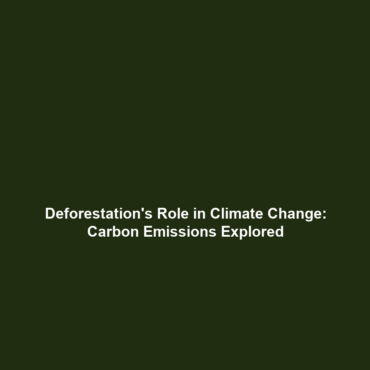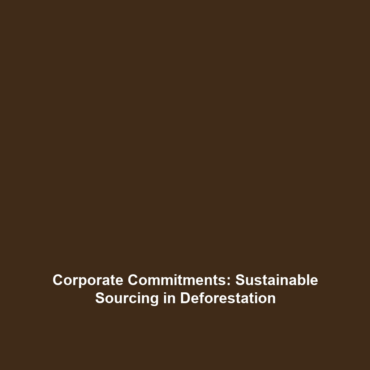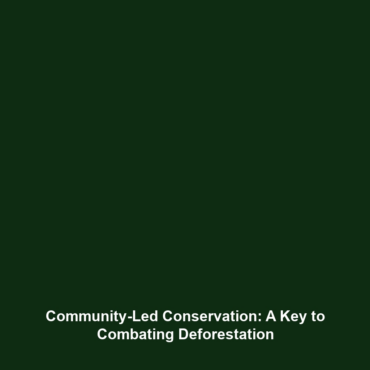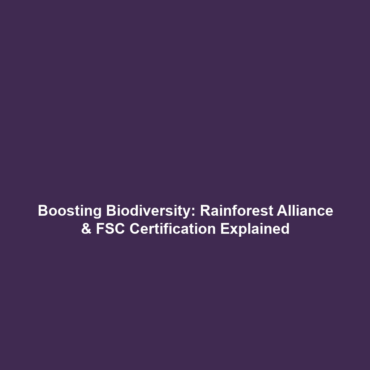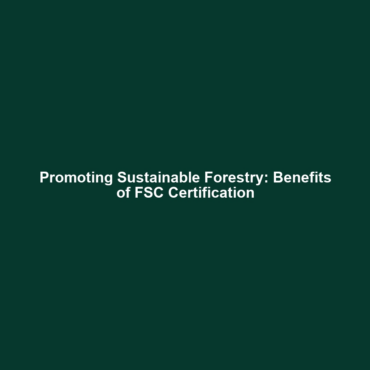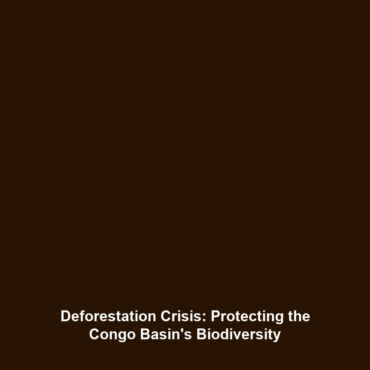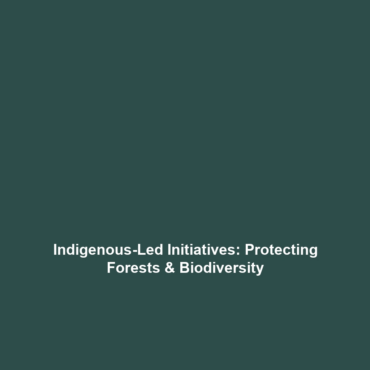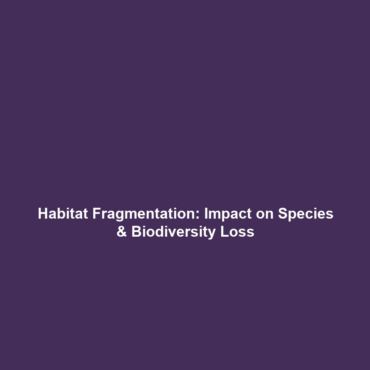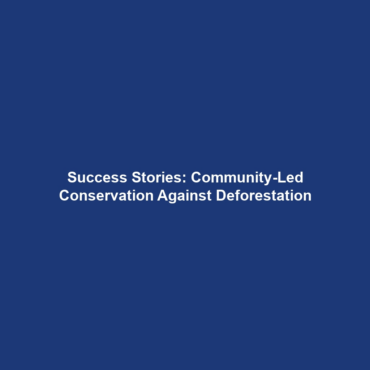Deforestation Contributes to Climate Change and Biodiversity Loss
Introduction: Deforestation is not just an isolated environmental issue; it plays a critical role in climate change by releasing stored carbon into the atmosphere and significantly reduces the planet’s capacity to absorb CO2. The ongoing loss of forests has implications not only for climate stability but also for biodiversity, as forests are vital ecosystems that support countless species. This article delves into the intersection of deforestation, climate change, and biodiversity loss, highlighting the urgent need for sustainable practices in forest management.
Key Concepts
Understanding the relationship between deforestation and climate change is essential. This section outlines crucial concepts that underpin how deforestation contributes to climate change.
Carbon Storage in Forests
Forests act as carbon sinks, storing large quantities of carbon dioxide. When trees are cut down, the carbon stored in their biomass is released into the atmosphere, exacerbating global warming.
Reduction in CO2 Absorption
With fewer trees, the planet’s ability to absorb CO2 diminishes. This reduction contributes to the greenhouse effect and increases atmospheric CO2 levels, reinforcing the cycle of climate change and affecting global weather patterns.
Impact on Biodiversity
Deforestation disrupts ecosystems, leading to habitat loss for countless species. The resilience of the earth’s biodiversity is compromised, as the species that depend on forests for survival face extinction.
Applications and Real-World Uses
The impacts of deforestation on climate change and biodiversity loss are visible across multiple sectors. Here are some significant applications:
- Sustainable Forestry Practices: Implementing sustainable forest management can help mitigate the effects of deforestation by promoting practices that maintain carbon storage.
- Reforestation and Afforestation: These strategies are practical applications aimed at restoring forests to reclaim lost carbon storage capacity.
- Carbon Credits: In climate economics, forests are leveraged in carbon credit trading, incentivizing the preservation of existing forests.
Current Challenges
Despite the clear link between deforestation, climate change, and biodiversity loss, several challenges remain:
- Increasing demand for land due to agriculture and urbanization.
- Difficulties in enforcing sustainable practices at local and global levels.
- Political and economic pressures that prioritize short-term gains over long-term sustainability.
Future Research and Innovations
The future of combating deforestation and mitigating climate change lies in innovative research and technologies. Key areas include:
- Remote Sensing Technologies: Improved monitoring of forest health and deforestation rates using satellite imagery.
- Biotechnological Advances: Genetic modifications aimed at increasing forest resilience to pests and diseases.
- Community-Based Management Models: Engaging local communities in conservation efforts to foster stewardship of forests.
Conclusion
In summary, deforestation contributes significantly to climate change by releasing stored carbon and reducing the planet’s ability to absorb CO2. This process poses severe risks not just for the climate but also for global biodiversity. Immediate action is essential to preserve our forests, which are crucial for maintaining ecological balance and combating climate change. For more information on sustainable practices and the effects of deforestation, explore our related articles on forest conservation and climate resilience strategies.
